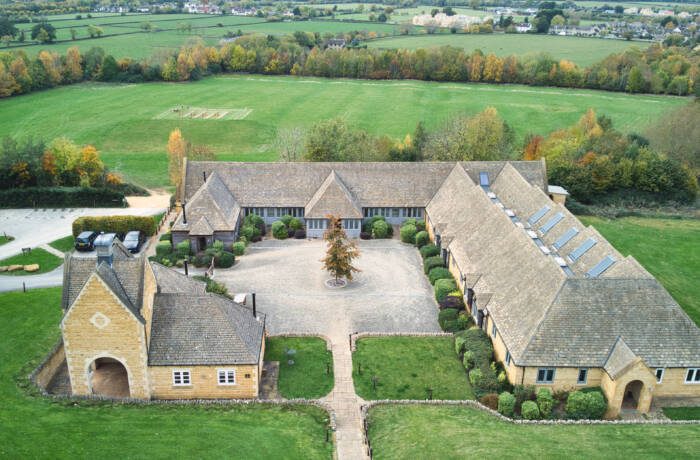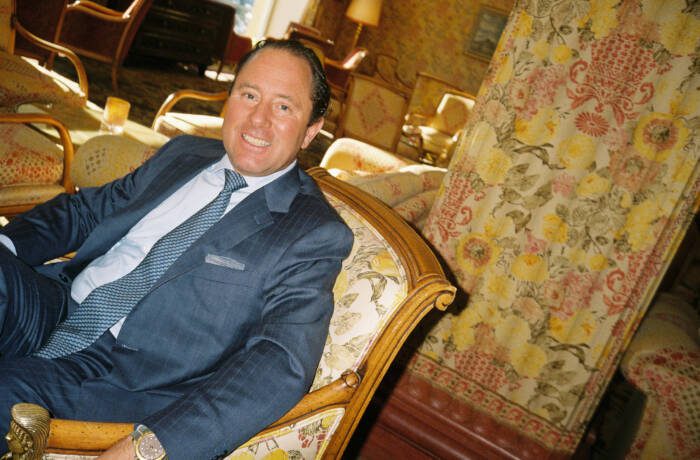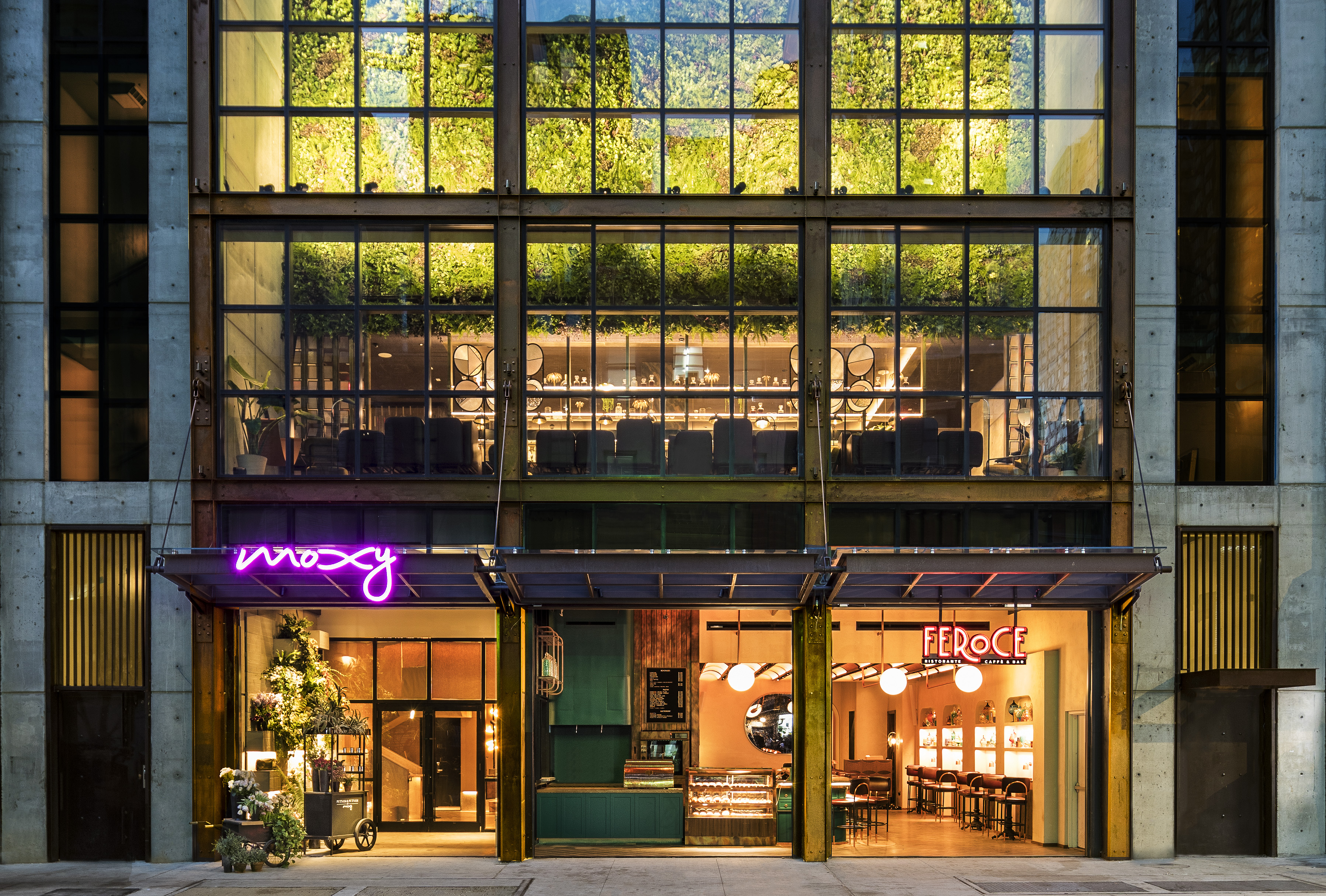
The entrance to the Moxy Hotel in Chelsea, NYC
President of Lightstone Mitchell Hochberg has put his stamp on New York with multiple real-estate developments, including luxury residences 130 William Street and 40 East End Avenue. In partnership with Marriott International, Lightstone are also developing lifestyle hotel brand Moxy, which has multiple properties spread across the US, Europe and Asia. LUX speaks to the entrepreneur about succeeding in a saturated market, New York real estate and working with the world’s biggest architects.
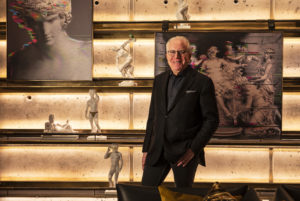
President of Lightstone Mitchell Hochberg
LUX: Lightstone is one of the largest privately held real estate companies in the US with your focus mainly in New York City. How do you succeed in such a saturated market?
Mitchell Hochberg: We’ve been able to distinguish ourselves by staying true to two common threads – across each of the various real estate segments in which we develop, each of our projects is entirely unique and as well, features a strong design aesthetic.
For instance, with our Moxy hotels, we saw an opportunity to be the first to develop an affordable micro-room, macro-amenity lifestyle hotel in New York, defining a new category of hotels amidst a sea of luxury lifestyle and lacklustre select service properties.
Follow LUX on Instagram: the.official.lux.magazine
In each of our projects, we strategically partner with architects and designers who have a strong design aesthetic, allowing us to create buildings that are provocative but contextual with interiors that are functional yet memorable. With our first two Moxy Hotels, for example, we worked with Rockwell Group to design the restaurants, bars, and clubs and Yabu Pushelberg for the rooms – both known for their luxury projects and unconventional choices for an affordable product, but key to creating the well-designed environments that make our properties special.
In the condominium space, we’ve partnered with two leading architects to design 130 William and 40 East End Avenue. At 130 William, we worked with world-renowned architect David Adjaye to create a 66-story building that pushes against the conventions of tall glass towers with a hand-cast concrete façade that will surely redefine the New York City skyline. At 40 East End, we worked with Deborah Berke, Dean of the Yale School of Architecture, to create a boutique condominium that represents a modern interpretation of local historic architecture.
LUX: Do you have a favourite residential area in New York?
Mitchell Hochberg: There’s an enclave on the Upper East Side of New York abutting Carl Schurz Park and Gracie Mansion (the Mayor’s residence) called East End Avenue. It’s a beautiful, bucolic neighbourhood that is fully immersed in the natural surroundings of the East River and the park, with nothing commercial in sight. In this setting, you have the advantage of both being in Manhattan and simultaneously not really feeling like you’re there – a result of the harmonious combination of the waterfront, the park, and the low density residential buildings. It’s the neighbourhood where we’re currently developing 40 East End Avenue, a boutique condominium, and it’s actually the one that I live in.
Read more: Life on the thrillionaire trail by Geoffrey Kent
LUX: You’re currently working with Marriott International to develop their new lifestyle hotel brand Moxy. How did that come about?
Mitchell Hochberg: After spending many years investing in and studying the hospitality market, we saw an opportunity to develop a new type of lifestyle hotel that could offer efficient rooms at an affordable rate without sacrificing design. In the U.S., everything is bigger – the cars, the TVs – and indeed the hotel rooms. So at the time, nobody was doing this. The Moxy brand incubated in Europe, where travellers have long been accustomed to smaller room sizes, and we felt it had the potential to align perfectly with our vision. So as our ideas evolved, we decided to approach Marriott about forming a partnership to bring the Moxy brand to the United States. We have a longstanding relationship with Marriott, and as the most highly regarded international hotel brand with over 110 million loyalty members, we knew that they would prove to be a huge asset to our developments. Together, we reimagined Moxy for the New York market.
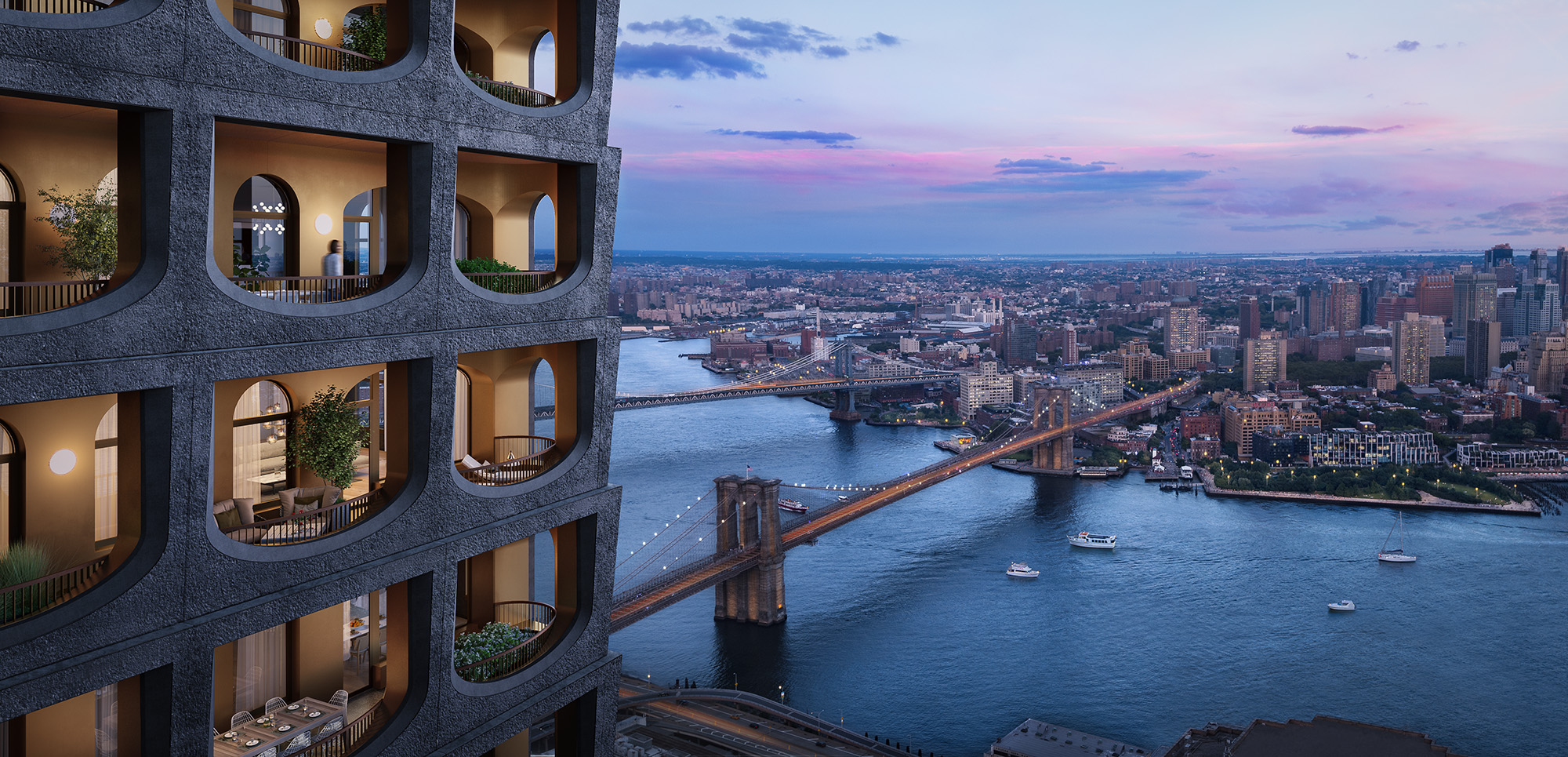
130 William Street’s view over the East River, NYC
LUX: How does your approach to developing for hospitality differ from other projects?
Mitchell Hochberg: The short answer is it doesn’t. What we’ve learned from our hospitality projects is that our guests don’t want to stay in their rooms – they crave social connections and memorable experiences. So our design has to accommodate that, with lobbies, bars, and restaurants that appeal equally to locals and integrate into the fabric of the community. Our residential projects – from rentals to luxury condominiums – all take this philosophy into account. We dedicate immense amounts of space in each of our projects to amenities – from the 20,000 square foot courtyard complete with a year-round greenhouse at ARC, a rental property in Long Island City, to the IMAX Private Theatre at 130 William (one of the first in New York City), we design spaces that our residents want to spend time in. Similarly to our Moxy hotels, we also consistently activate our residential properties with innovative programming, from wine tastings to yoga classes, allowing our residents to interact and get to know each other. That’s where the magic really happens.
Read more: Maryam Eisler’s Icelandic photography series
LUX: What’s been the most challenging project for Lightstone so far and why?
Mitchell Hochberg: It would have to be Moxy Times Square. From a pure design standpoint, the project had just about every challenge you could think of. The building was an adaptive reuse of a 110-year old office – not exactly an easy canvas for the flexible, vibrant, and memorable spaces you see today. Working within the confines of an existing building is always challenging, but in this particular instance the building was also landmarked, meaning we had to preserve the façade and all of the windows as well. The sheer scale of the project also brought its own complexities – the hotel is 612 keys in total with over 22,000 square feet of lobbies, bars, restaurants, and meeting spaces, including the largest indoor/outdoor rooftop bar in New York City.
Despite all this, I think the biggest challenge was bringing something entirely new to the New York City hotel market. We had to prove ourselves to guests who had never seen anything like this before, and convince them to buy into our “deal”: in exchange for an affordable rate, we could provide a room that’s efficient but stylish, along with public spaces that are engaging and well designed.
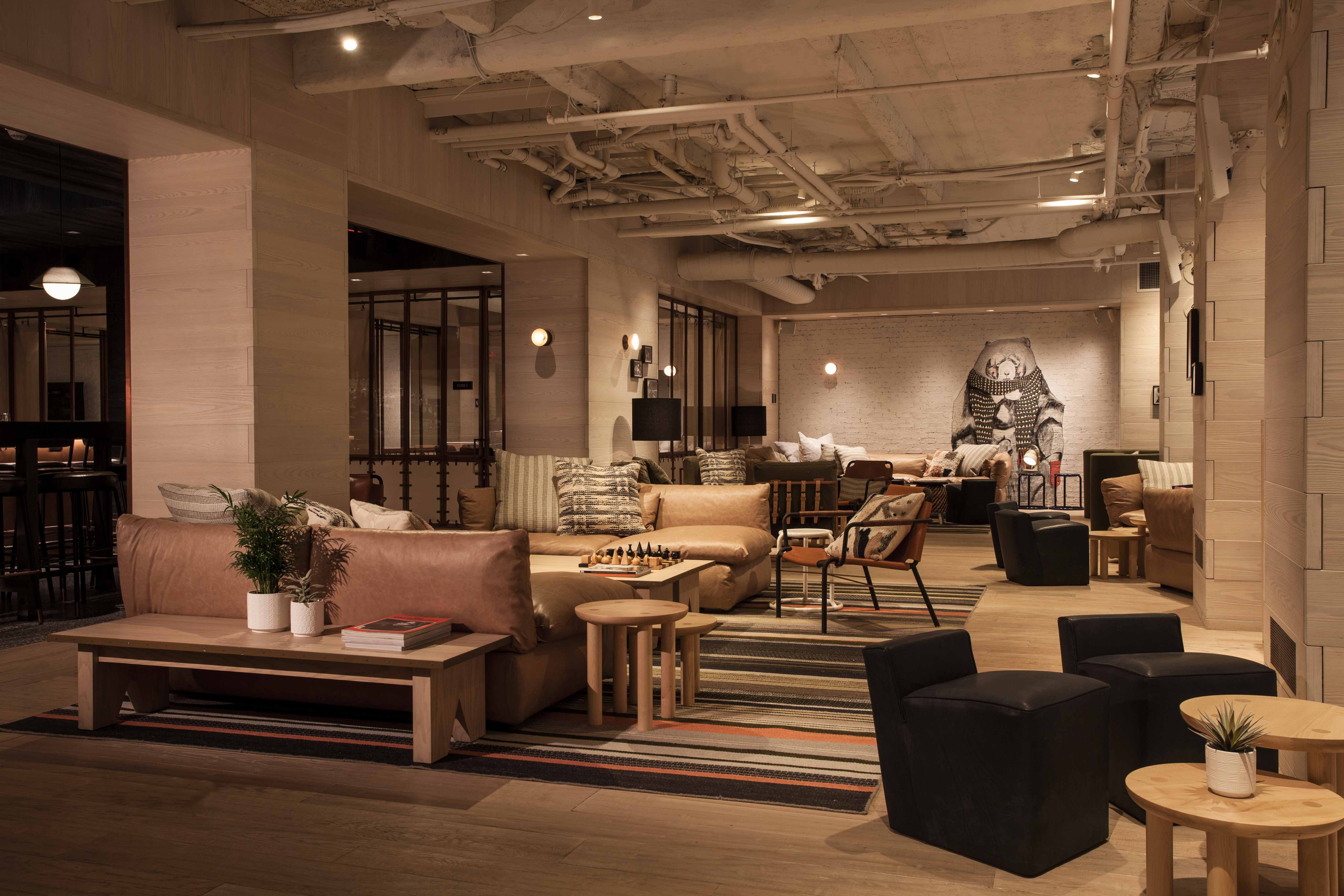
Moxy’s luxurious lounge bar at Times Square, NYC
LUX: What are your future predictions for the real estate market in NYC?
Mitchell Hochberg: The real estate market in New York over the long term is always going to be strong. There will obviously be hills and valleys based upon macro issues, but you have to keep in mind that New York City is an island and there’s only so much space. People will always want to live here, work here, and visit here, and as a result it will always be a strong market.
LUX: Will Lightstone ever expand overseas?
Mitchell Hochberg: We’re currently discussing investments and development overseas. I think our first projects will probably be somewhere in the UK where we’re a little more familiar with the language and business customs, but we are always open to new opportunities.
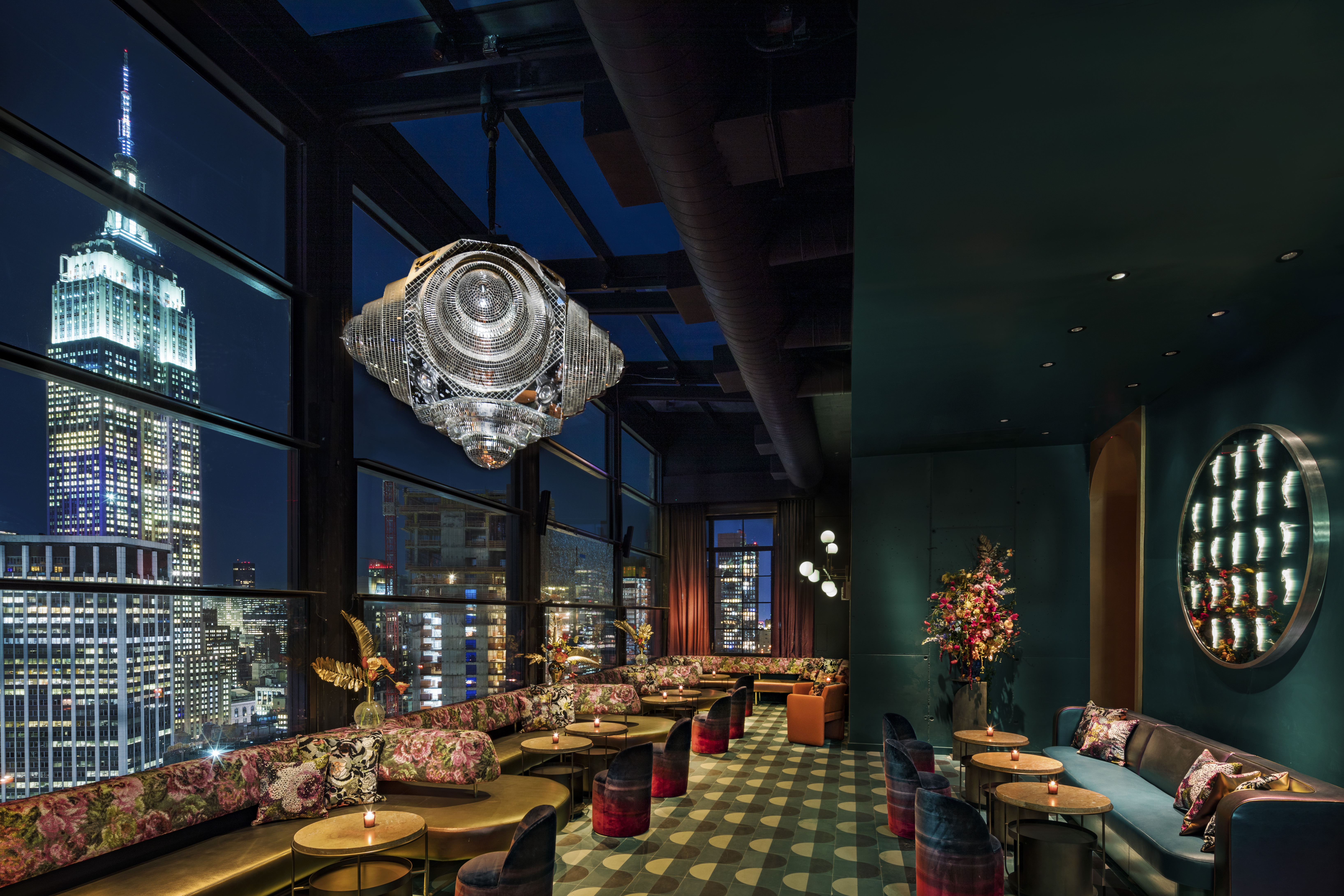
The botanically inspired Fleur Room at Moxy Chelsea, NYC
LUX: How do you switch off from work-mode?
Mitchell Hochberg: One of my biggest passions is travel – I try to travel as often as possible. I’m naturally very curious, and find that my creativity is often sparked by wandering around and getting lost in cities and fully immersing myself in all aspects of the culture, which is both fascinating and inspiring. While I do switch off when I travel, appreciating architecture and design, as well as learning how different people live, serves as the inspiration for a lot of the development we do. In Italy, for example, which is one of my favourite places to travel, I’m constantly awed by the art, architecture, fashion, and yes, even the food. But above all, I’m struck by the genuine warmth of its people. You’ll see a lot of that reflected in the restaurants and bars and Moxy Chelsea. For example, Feroce, our Italian restaurant, took inspiration from some of my favourite spots around Italy: the Caffé and Pasticceria from the bar culture in Italy, where people visit the same spot for an espresso and cornetto in the morning and an Aperol Spritz in the evening; the outdoor dining garden from my favourite restaurant in Rome, Antica Pesa; and many of the design details from my favourite restaurant in Milan, Da Giacomo.
When I want to completely chill out though, there’s nothing better than being on a beautiful beach. One of my favourites is Belmond Maroma in Riviera Maya, Mexico. It is casual and relaxed but with incredible service reflected by the culture of the local team who treat you as if you are in their own home. It is the epitome of barefoot chic!
Find out more: lightstonegroup.com and moxy-hotels.marriott.com

